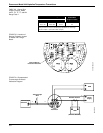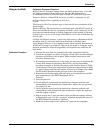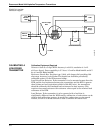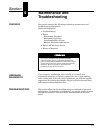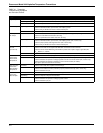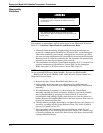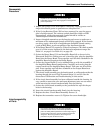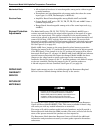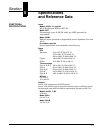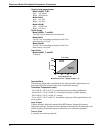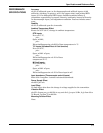
4-3
Maintenance and Troubleshooting
REPAIR
In case of a failure, particularly one in which the transmitter’s output goes to
one extreme and stays there, the first step is to determine whether the fault lies
with the sensor(s) or the transmitter. Although only a careful calibration can
determine sensor shifts, catastrophic failures (such as an open or shorted sensor
element) can be checked with an ohmmeter at the time the transmitter is
disconnected from the sensor(s).
NOTE
The Resistance vs. Temperature and Millivolt vs. Temperature tables for the
standard Model 444 sensor input types are presented in Table B-1 in Appendix
B Temperature Sensor Reference Information.
RTD Test: A platinum RTD with an ice-point (°C) resistance of 100 ohms should
read approximately as shown in Table B-1 at other temperatures. The resistance
between the two leads on the same side of the sensing element should be low, a
few ohms at most. Resistance between any of the RTD leads and the sensor
sheath should be high
(1 megohm or greater).
Thermocouple Test: Thermocouple resistance should be low (10 ohms or less
for short runs of heavy wire). For longer runs of extension wire, resistance will
be roughly ten times the resistance of copper wire of the same diameter. If the
sensor and receiving equipment are functioning properly, the transmitter will
probably require repair.
The transmitter is designed for easy replacement of its plug-in, modular circuit
boards. A malfunction can be most easily isolated by substituting boards one at a
time until the unit functions properly.
It is recommended that customers return defective circuit boards to Rosemount
Inc. for repair (see “RETURN OF MATERIALS” on page 4-6). This ensures that
replacement parts meet the design criteria for the board and that the
malfunctioning board is completely checked and repaired.
Rosemount Inc. offers a circuit board repair/replacement program through its
many service centers. Please contact your Rosemount field sales office for price
and delivery information.
Exposure to hazardous substances can cause death or
serious injury. If a hazardous substance is identified, a
Material Safety Data Sheet (MSDS), required by law to be
available to people exposed to specific hazardous
substances, must be included with the returned materials.




